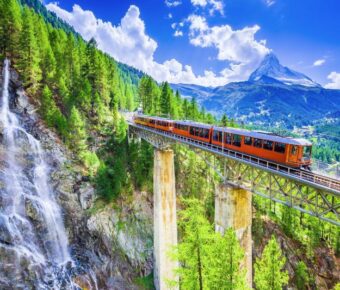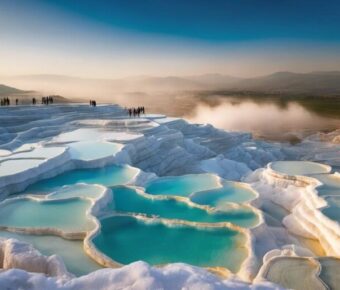
Breckenridge vs Arapahoe Basin: 5 Key Differences for Your Colorado Ski Vacation
Choosing between Breckenridge and Arapahoe Basin can be tough for Colorado ski trip planners. These resorts sit close to each other but offer very different experiences for skiers and snowboarders. Breckenridge has more terrain with 155 runs compared to A-Basin’s 105, making it better suited for groups with varied skill levels, especially beginners and intermediates.
A-Basin (as locals call it) tends to attract more advanced skiers and has fewer beginner options. It’s known for being more affordable and having a no-frills, authentic mountain vibe. Suppose you’re traveling with a large group. In that case, it’s worth noting that Breck has reliable cell service throughout the mountain, while A-Basin does not—a practical consideration when trying to coordinate with friends.
Both resorts showcase Colorado’s amazing Rocky Mountain terrain but serve different needs. Breck offers more amenities, dining options, and a lively town atmosphere. A-Basin delivers a more raw skiing experience at a better price point with typically smaller crowds.
Table of Contents
- Resort Histories and Legends
- Breckenridge’s Storied Past
- The Legacy of A-Basin
- Mountain Profiles and Stats
- Breckenridge’s Peak Data
- A-Basin’s Elevation and Terrain
- Skiing and Snowboarding Terrain
- Groomers and Bowls at Breckenridge
- Challenging Chutes of A-Basin
- Lift Systems and Access
- Navigating the Lifts at Breckenridge
- Lift Experiences at A-Basin
- Resort Facilities and Services
- Accommodations at Breckenridge
- Amenities in Arapahoe Basin
- Seasonal Conditions and Best Time to Visit
- Powder Days in Breckenridge
- Prime Skiing at A-Basin
- Comparative Cost Analysis
- Breckenridge Budgeting
- Affordable Options at A-Basin
- Travel Logistics and Planning
- Reaching Breckenridge
- A-Basin Accessibility
- Frequently Asked Questions
- What are the best slopes for beginners at Breckenridge and Arapahoe Basin?
- How do lift ticket prices compare between Breckenridge and Arapahoe Basin?
- Which resort offers a more family-friendly experience, Breckenridge or Arapahoe Basin?
- Can you explain the differences in terrain between Breckenridge and Arapahoe Basin?
- What are the unique après-ski activities available at Breckenridge and Arapahoe Basin?
- How does the annual snowfall at Breckenridge compare to that of Arapahoe Basin?
- Book Your Dream Experience
- More Travel Guides
Resort Histories and Legends

Breckenridge and Arapahoe Basin have rich histories shaping Colorado’s ski industry. These mountains carry decades of stories, from humble beginnings to becoming iconic destinations for skiers worldwide.
Breckenridge’s Storied Past
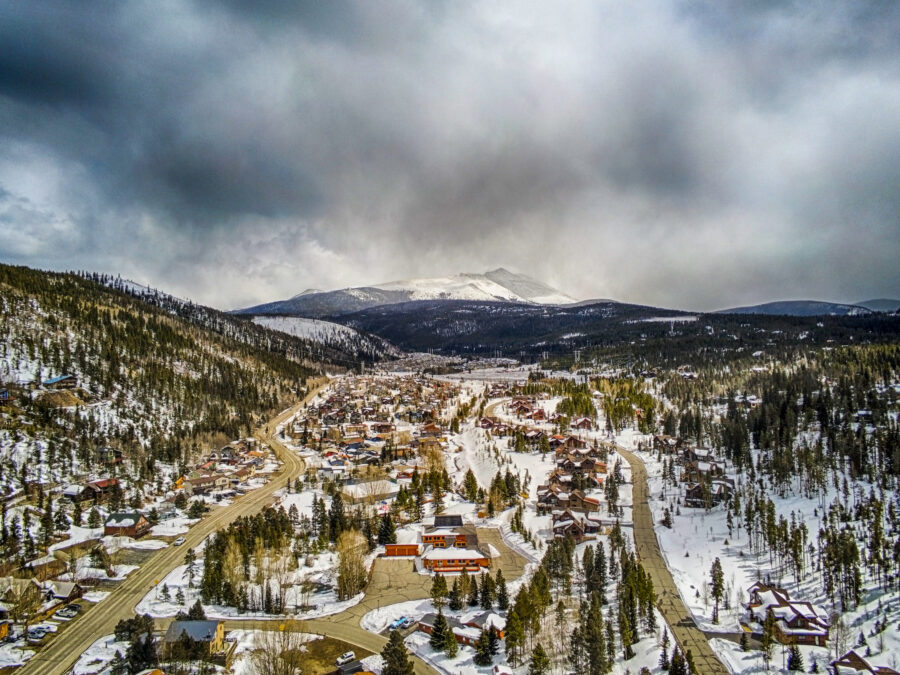
Breckenridge has transformed dramatically since its early days. The resort’s modern history took a significant turn in 1993 when Ralston-Purina purchased it. This acquisition brought Breckenridge under the same ownership as Keystone Resort and Arapahoe Basin.
During this period, the three sister resorts recorded an impressive 2.6 million skier visits. This milestone marked Breckenridge’s emergence as a major player in Colorado’s competitive ski market.
Before becoming a ski destination, Breckenridge was a mining town. Its transition to tourism preserved the area’s historic charm while creating one of America’s most beloved mountain destinations.
The Legacy of A-Basin

A-Basin, affectionately known as “The Legend,” began in 1946 as a passion project built by ski enthusiasts. Unlike the polished image of larger resorts, A-Basin embraced its identity as a “ski-bum hill” from the start.
The founders, driven by love for skiing rather than corporate interests, created A-Basin with limited resources. This scrappy beginning established the character that still defines the mountain today.
The 10th Mountain Division, America’s legendary alpine military unit, influenced early skiing in Colorado. Their veterans helped develop many ski areas after WWII, bringing mountain expertise to places like A-Basin.
Despite its modest size (not even ranking in North America’s top 50 for skiable acreage), A-Basin punches above its weight in reputation and terrain quality. It maintains its authentic ski culture while larger resorts focus on amenities.
Mountain Profiles and Stats

Breckenridge and Arapahoe Basin (A-Basin) offer dramatically different mountain experiences in Summit County, Colorado. Breck boasts significantly more terrain with 155 ski slopes than A-Basin’s 105, though each mountain has unique characteristics that appeal to different skiers.
Breckenridge’s Peak Data
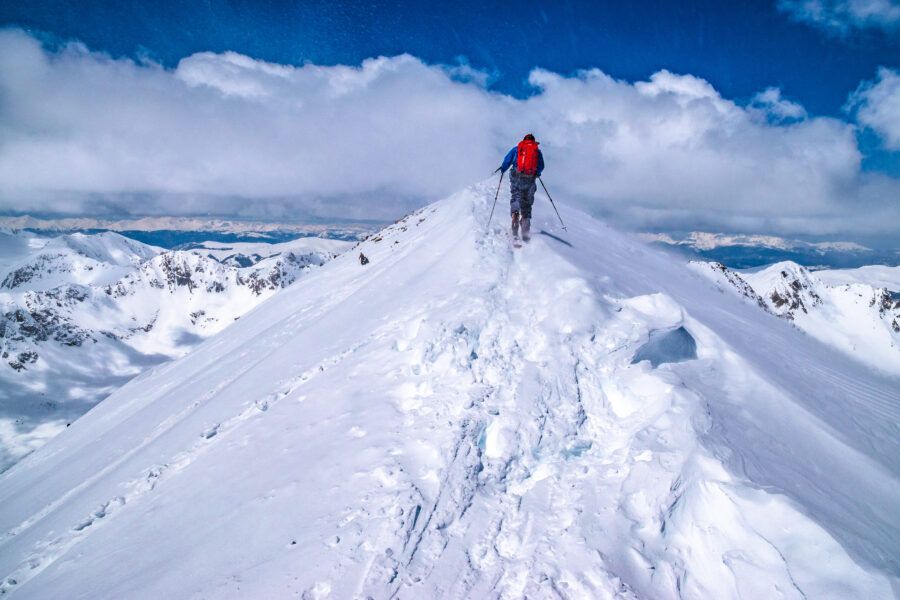
Breckenridge spans five peaks, covering a massive 2,908 acres of skiable terrain. The resort’s impressive vertical drop measures 3,398 feet, with the base at 9,600 feet and the summit at 12,998 feet at the top of Imperial Express—North America’s highest chairlift.
Breck receives about 300 inches of annual snowfall, with the snow quality typically lighter and drier than coastal resorts. The mountain features:
- Five distinct peaks (numbered 6-10)
- 187 trails with options for all skill levels
- 34 lifts, including four high-speed six-packs
- Nearly 3,000 acres of varied terrain
The resort’s high elevation makes it prone to windy conditions and helps preserve snow quality. Visitors should know that altitude sickness can affect some guests, especially sea-level guests.
A-Basin’s Elevation and Terrain
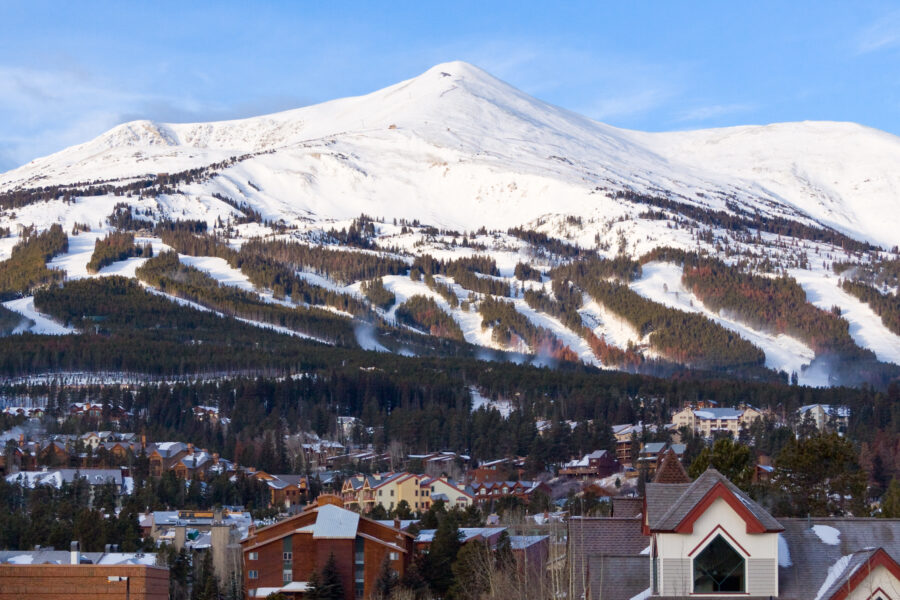
A-Basin, affectionately known as “The Legend,” is slightly higher than Breck. Its base is 10,780 feet, and the summit is 13,050 feet at the East Wall. This compact resort covers 1,428 acres—roughly half the size of Breckenridge.
What A-Basin lacks in size, it makes up for in character and challenge. The mountain receives around 350 inches of annual snowfall and features:
- The East Wall – extreme terrain requiring hiking access
- Montezuma Bowl – added in 2007, expanded terrain by 80%
- The Steep Gullies – expert-only chutes requiring a 30-minute hike out
- Legendary spring skiing often extends into June or July
A-Basin’s north-facing slopes and high elevation create excellent snow preservation, which explains its exceptionally long season. The Basin typically opens in October and often remains open until June or later, giving it one of the longest seasons in North America.
Skiing and Snowboarding Terrain
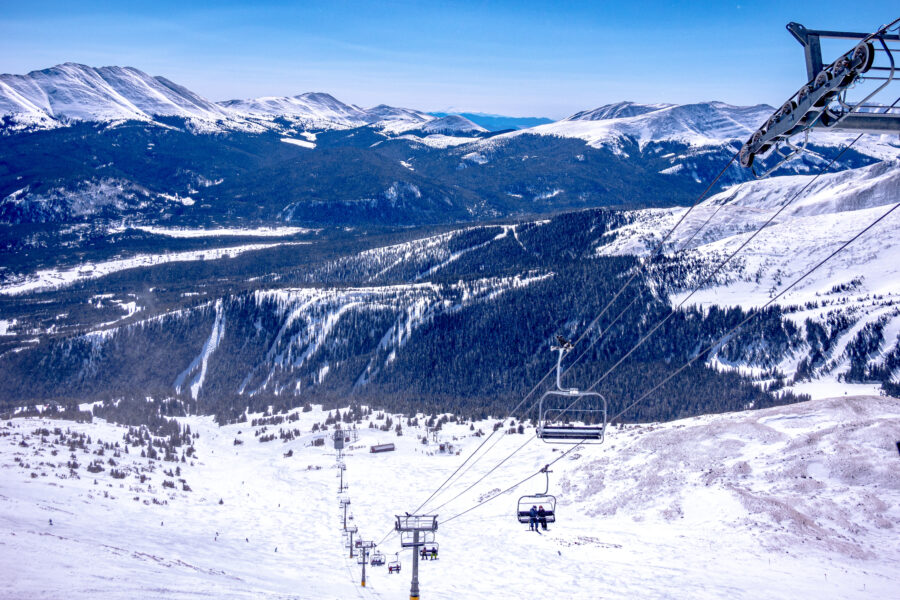
Breckenridge and Arapahoe Basin offer distinctly different mountain experiences for skiers and snowboarders. Breck boasts more than double the skiable terrain of A-Basin, with wide-open bowls and perfectly manicured runs. At the same time, A-Basin delivers challenging steeps and a more raw mountain experience.
Groomers and Bowls at Breckenridge
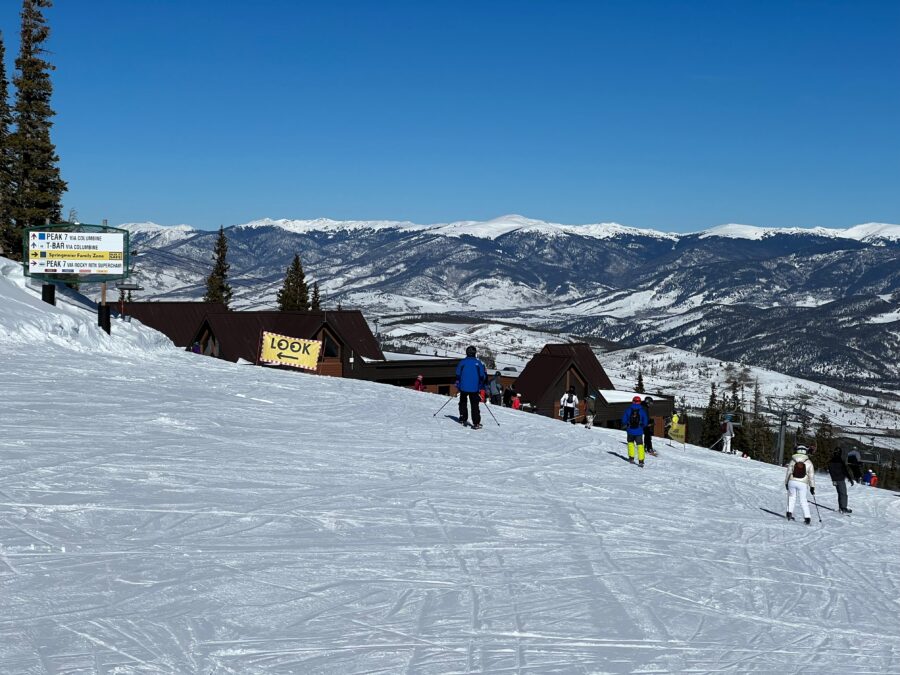
Breck’s 155 trails spread across five peaks give skiers and snowboarders plenty of options. The mountain truly shines for intermediate riders with its long, wide groomers that seem to go on forever. Peak 7 is intermediate heaven with perfectly pitched blue runs that build confidence.
For those seeking more adventure, Breck’s high alpine bowls are spectacular. The Imperial Express SuperChair (North America’s highest chairlift) delivers riders to mind-blowing above-treeline terrain at 12,840 feet.
Beginners aren’t left out either. Peak 9 offers gentle slopes where novices can learn without feeling intimidated. The mountain’s size means groups with mixed abilities can all find suitable terrain to enjoy.
Challenging Chutes of A-Basin
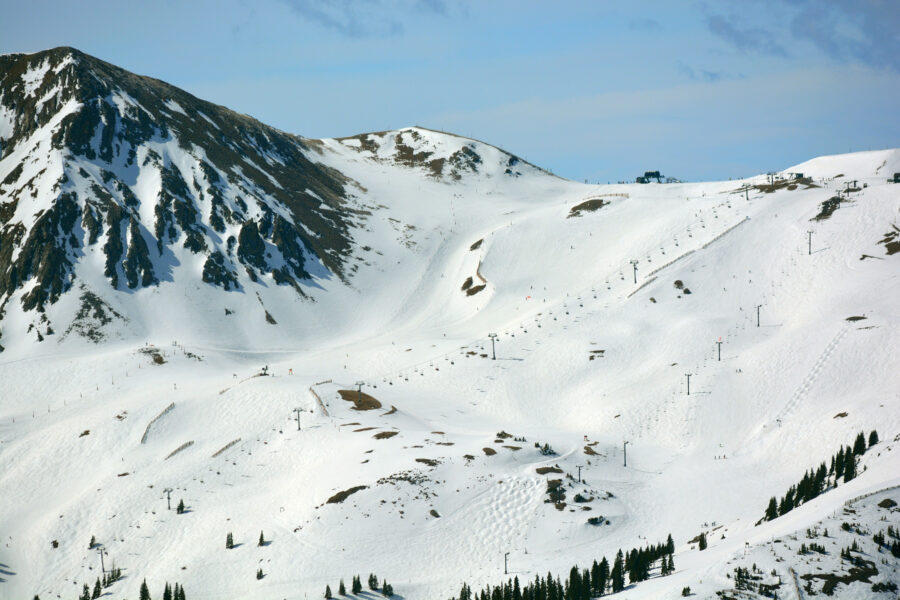
A-Basin (or “The Legend,” as locals call it) packs a serious punch into its smaller footprint. The mountain earned its reputation on steep, technical terrain, which makes advanced skiers grin excitedly. The Pallavicini area features heart-pounding chutes and tight tree runs that demand precision.
The mountain’s recent terrain expansion opened the Beavers and Steep Gullies areas, adding incredible advanced and expert options. These zones offer some of Colorado’s most challenging in-bounds skiing with cliff drops and narrow passages.
That said, beginners and intermediates can still find enjoyable terrain, particularly on the Lenawee Face and around Black Mountain Lodge. However, A-Basin’s limited novice terrain makes it better suited for those who’ve progressed beyond pizza turns.
See Related: Breckenridge vs Copper Mountain: Key Differences for Your Colorado Ski Adventure
Lift Systems and Access

Both Breckenridge and A-Basin offer unique lift systems that shape your skiing experience. Breck boasts a more extensive network with modern amenities, while A-Basin provides a more streamlined approach with recent upgrades to improve mountain access.
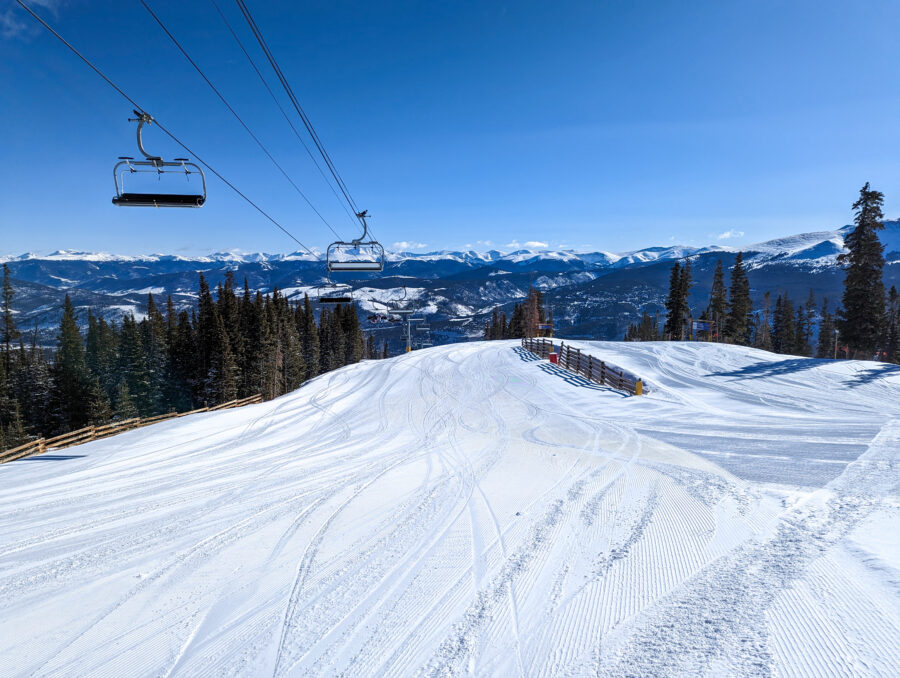
Breckenridge’s lift system is impressive, with 34 lifts spread across five peaks. The resort has invested heavily in high-speed quads and six-person chairlifts that move skiers efficiently up the mountain.
The BreckConnect Gondola serves as the main artery, connecting the town to the base of Peak 8. This makes it convenient for visitors in downtown Breckenridge to access the slopes without driving.
Peak-to-peak travel is well-designed with interconnecting lifts. The Imperial Express, North America’s highest chairlift, provides access to challenging terrain above the tree line – a significant draw for advanced skiers.
Lift lines at Breck can get lengthy during peak season and weekends, especially at the base areas and popular mid-mountain lifts. Early morning and late afternoon skiing often provides shorter wait times.
Lift Experiences at A-Basin

A-Basin has a more compact lift system with just nine lifts, but they efficiently serve the mountain’s 1,428 acres of skiable terrain. The smaller number of lifts means skiers know the mountain layout quickly.
Recent upgrades have significantly improved the experience. The new Beavers lift expanded terrain access, and the replacement of the Pallavicini lift in 2020 enhanced uphill capacity while maintaining the classic A-Basin feel.
The Lenawee Express, recently upgraded for the 2022-23 season, provides crucial access to the mountain’s upper terrain and has improved uphill capacity.
Lift lines at A-Basin are shorter than at Breckenridge, especially on weekdays. Even on busy weekends, the wait rarely exceeds 10-15 minutes for most lifts.
The lift ticket prices at A-Basin are typically 20-30% lower than those at Breckenridge, offering better value for budget-conscious skiers who don’t need extensive lift infrastructure.
Resort Facilities and Services
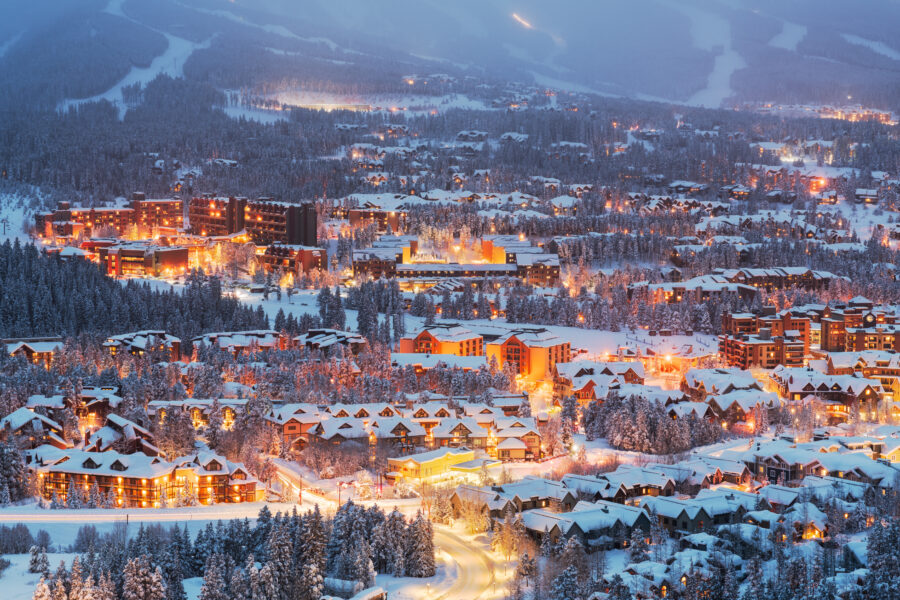
Both resorts offer distinct services catering to different skiers and snowboarders. Breckenridge provides a comprehensive resort experience with extensive lodging options, while Arapahoe Basin focuses on a more stripped-down, skiing-focused atmosphere.
Accommodations at Breckenridge
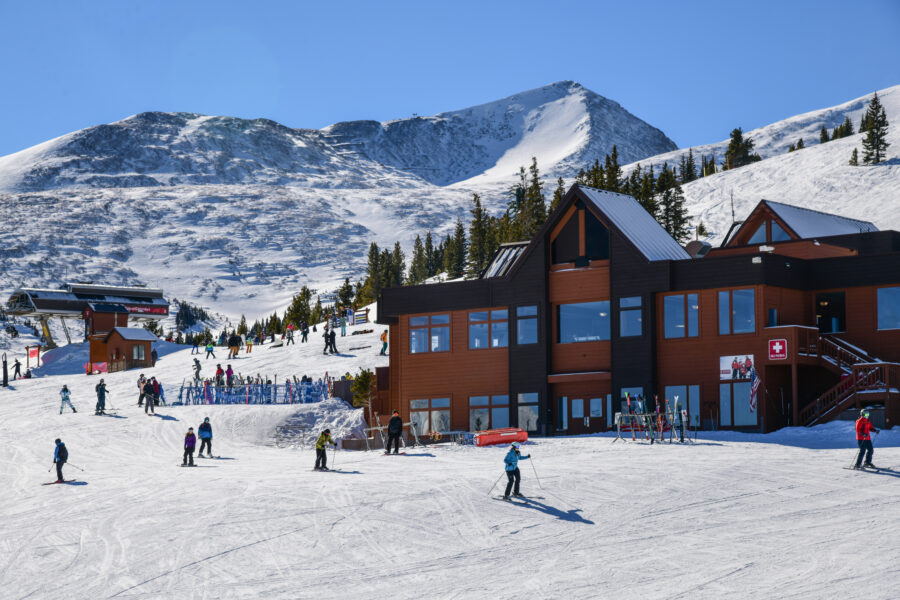
Breckenridge shines with its wide range of lodging options, from luxury hotels to cozy condos. The base area features ski-in/ski-out properties that put you steps away from the lifts.
The town offers charming Victorian-style buildings converted into boutique hotels alongside modern resort accommodations. Many properties include hot tubs, heated pools, and spas—perfect for relaxing after a day on the slopes.
Dining options are plentiful, with over 80 restaurants ranging from casual eateries to fine dining. Breckenridge also boasts a vibrant nightlife scene with numerous bars and clubs for après-ski entertainment. Shopping enthusiasts will appreciate the 200+ stores along Main Street, offering everything from ski gear to local souvenirs.
Amenities in Arapahoe Basin
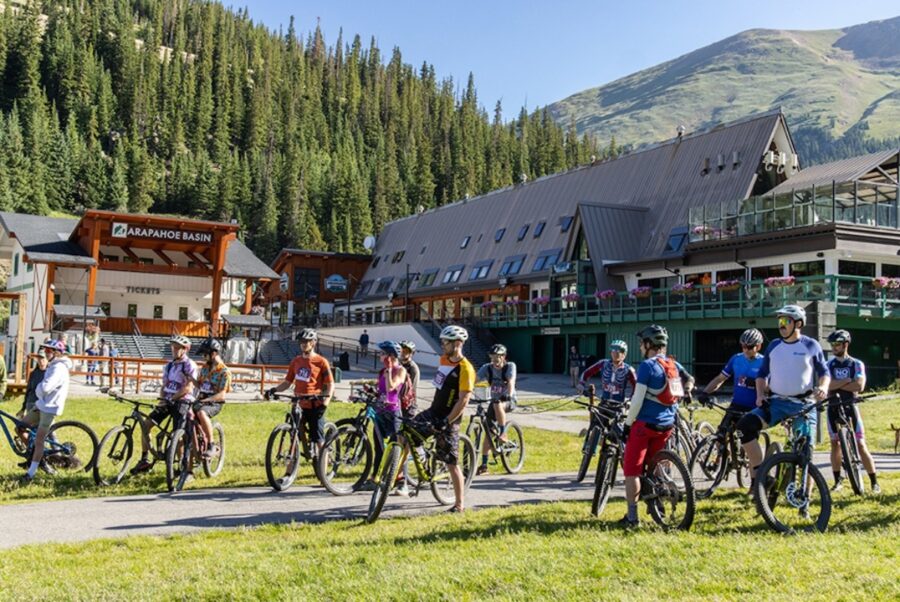
A-Basin takes pride in its no-frills approach, focusing on exceptional skiing rather than luxury amenities. The legendary “Beach” area serves as a unique tailgating spot where visitors can grill and socialize in the parking lot with stunning mountain views.
The base area offers limited but quality dining options, including the 6th Alley Bar & Grill, known for hearty meals and local craft beers. The mid-mountain Black Mountain Lodge provides scenic dining with surprisingly good menu options.
A-Basin lacks on-site lodging, so most visitors stay in nearby Keystone or other Summit County towns. The resort operates two hours longer than Breckenridge, often opening early in October and closing in June, giving it the longest season in the area.
Rental shops offer quality equipment, though with fewer choices than Breckenridge. The compact base area means shorter walks from parking to lifts—a practical advantage for many skiers.
Seasonal Conditions and Best Time to Visit
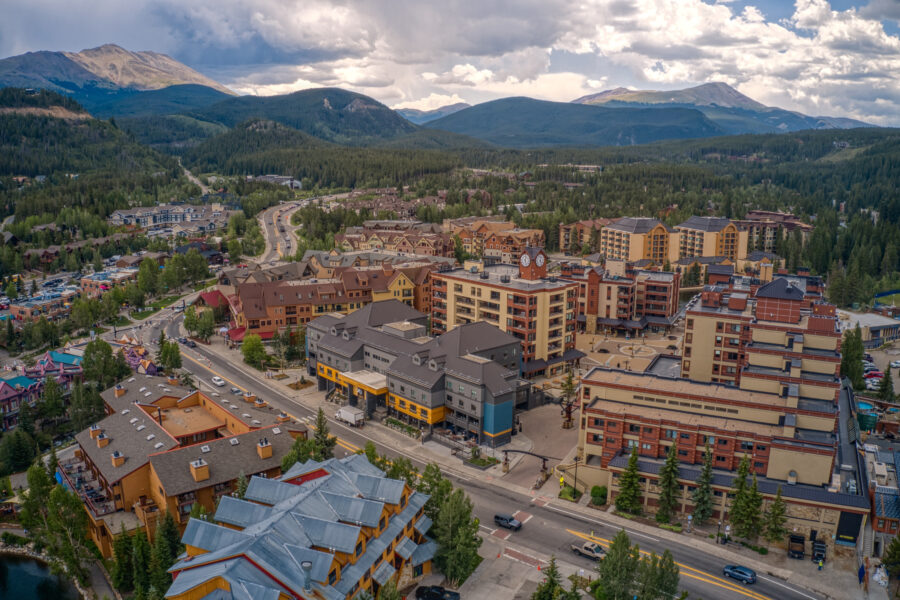
Timing your ski trip to Breckenridge or Arapahoe Basin can make all the difference in your mountain experience. Each resort has weather patterns and peak seasons that savvy skiers should know.
Powder Days in Breckenridge
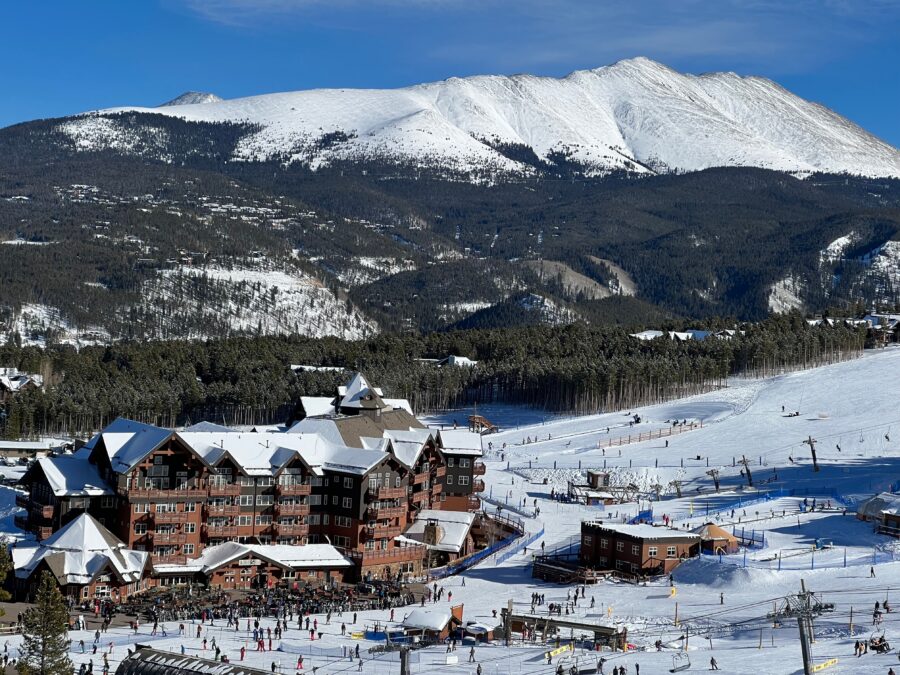
Breckenridge’s high elevation helps it maintain good snow conditions throughout much of the winter season. Mid-February typically offers the best overall snow conditions at Breck. The resort’s stats show it averages about 73% of terrain open by Christmas, though in about 15% of seasons, less than half the mountain is accessible by the holiday.
Early season can be hit-or-miss. Breck usually opens around November 10th, but the first few weeks often have limited terrain. The mountain’s high altitude (12,998 feet) helps preserve snow quality even during warmer periods.
Powder hunters should target January through March for the deepest days. Breck gets respectable average snowfall, but its popularity means fresh powder gets tracked out quickly. Morning arrivals after overnight storms will reward you with better conditions.
Prime Skiing at A-Basin

A-Basin (affectionately called “The Legend”) is famous for having one of Colorado’s longest ski seasons. Opening as early as mid-October, A-Basin often remains open well into June or even July, earning it the nickname “the spring skiing capital.”
The mountain’s north-facing slopes and high elevation (base: 10,780 feet, summit: 13,050 feet) help preserve snow quality longer than many other resorts. This makes A-Basin particularly appealing during early and late season when other mountains have limited terrain or have closed entirely.
Mid-winter at A-Basin delivers reliable conditions, but what sets it apart is the spring skiing. March and April often bring significant snowfall combined with more moderate temperatures and sunshine. The mountain’s layout helps shield it from the wind better than Breckenridge on blustery days.
For powder seekers, A-Basin’s smaller size and more challenging terrain mean fresh tracks last longer than larger resorts. The mountain’s loyal locals know precisely when to show up after storms.
See Related: Breckenridge vs Aspen: Key Differences to Know Before Booking Your Colorado Ski Getaway
Comparative Cost Analysis
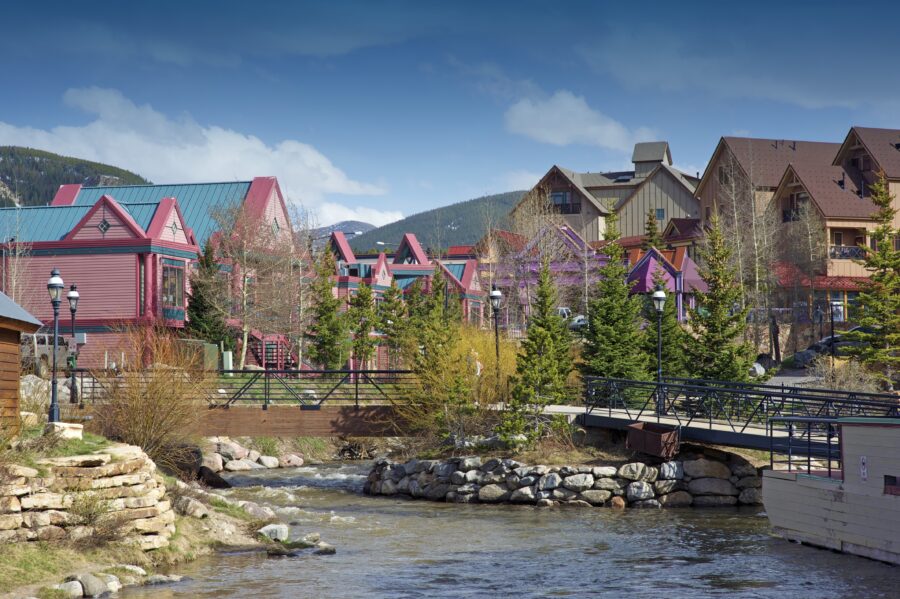
Your wallet will notice a significant difference when choosing between these two iconic Colorado ski destinations. Price points vary dramatically between the upscale Breckenridge experience and the more laid-back vibe of Arapahoe Basin.
Breckenridge Budgeting
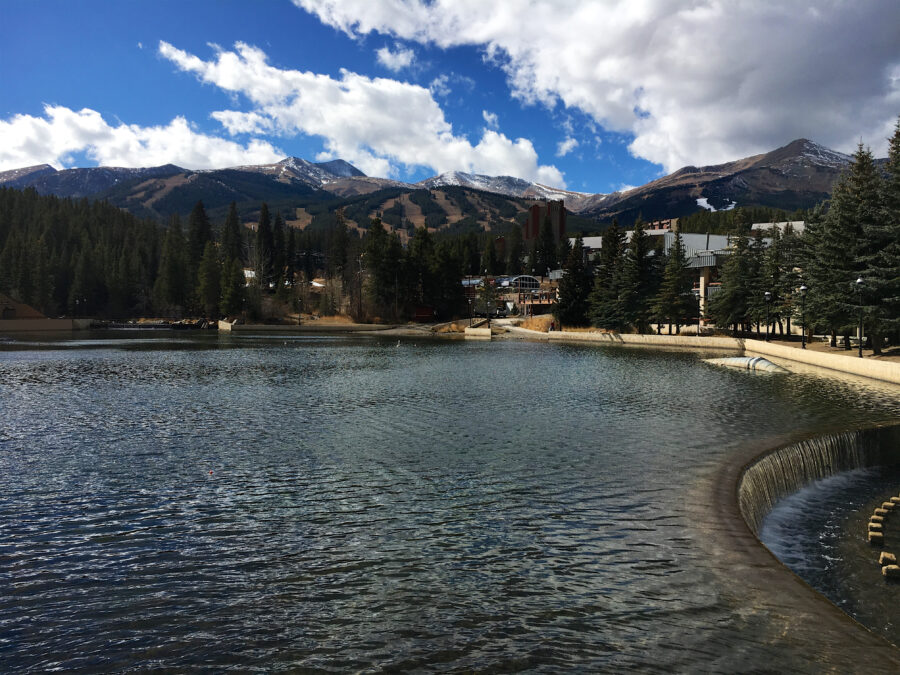
Breckenridge tends to hit the wallet harder across all expense categories. Daily lift tickets at Breck can run $200+ during peak season, making it one of Colorado’s pricier destinations. The resort’s Epic Pass options provide some relief if you plan multiple visits, but they still require a substantial upfront investment.
Beyond skiing costs, Breckenridge’s lodging, dining, and après-ski activities command premium prices. A slope-side hotel room might start around $300-400 nightly during winter, while even budget accommodations in town rarely dip below $200.
Food costs at Breckenridge Mountain restaurants often surprise first-time visitors. A basic lunch can easily exceed $20 per person, with sit-down restaurants charging considerably more.
Affordable Options at A-Basin
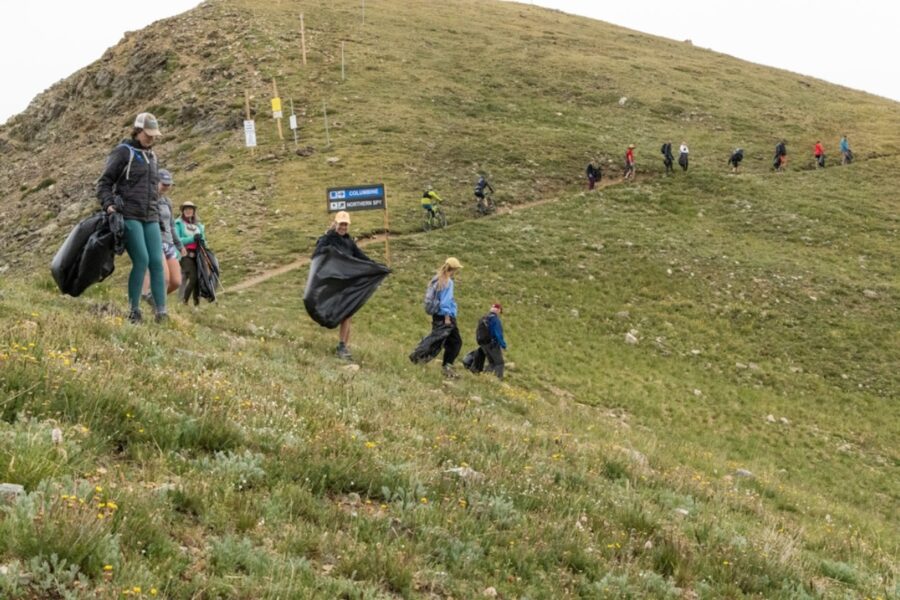
A-Basin offers a refreshingly different financial picture for budget-conscious skiers. Daily lift tickets typically run 30-40% less than Breckenridge, with advance online purchases providing additional savings. The mountain occasionally offers mid-week specials that can drop prices even lower.
The “Legend” (as locals call it) maintains a no-frills approach that extends to its food service. On-mountain dining options are limited but reasonably priced. The famous “Beach” parking area even allows tailgating – a money-saving alternative where many regulars grill their meals.
A-Basin lacks on-site lodging, so visitors can save money by staying in nearby towns like Dillon or Silverthorne, where accommodations are significantly cheaper than Breckenridge’s options.
Travel Logistics and Planning
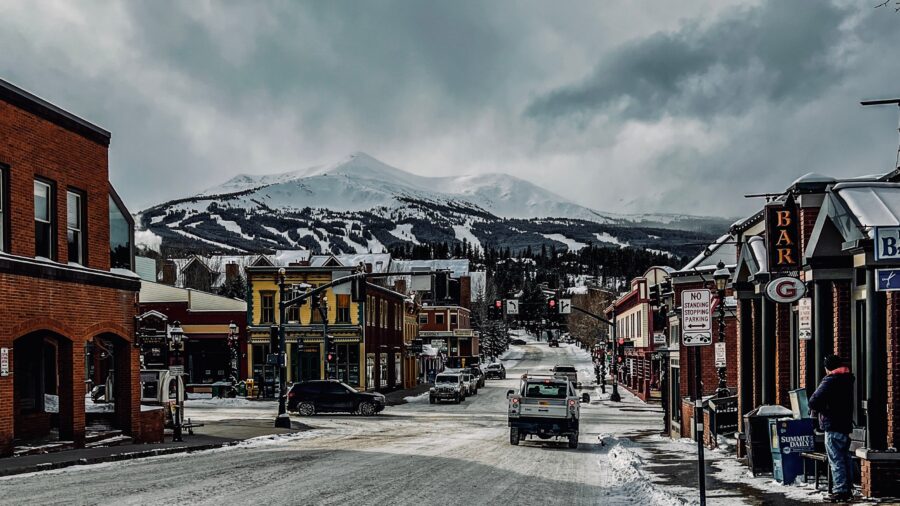
Getting to these Colorado ski destinations requires some planning ahead. Each resort has different transportation options and accessibility factors that can impact your trip experience.
Reaching Breckenridge
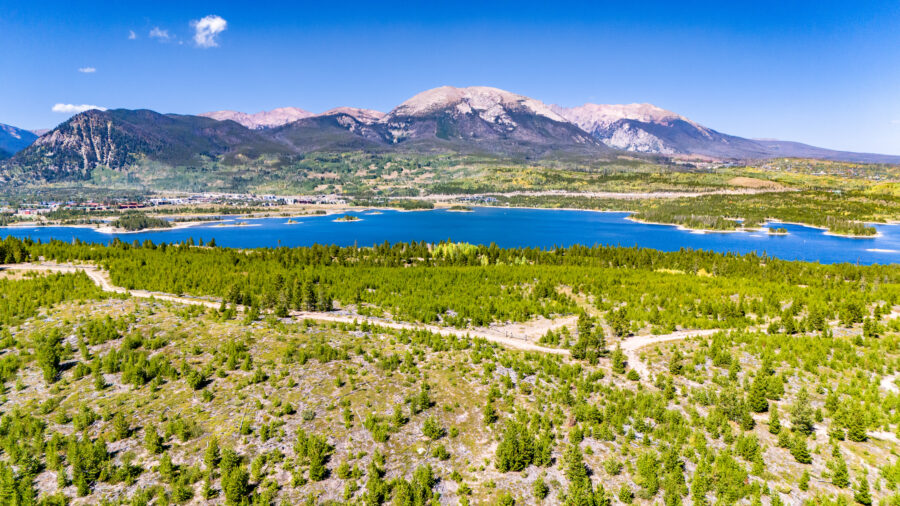
Breckenridge is easier for most travelers to reach. It’s about a 1.5-hour drive from Denver International Airport, making it convenient for out-of-state visitors. You can rent a car or take a shuttle service directly to the resort.
Breckenridge has a free bus system connecting all major areas, so you won’t need a car once you arrive. This is super helpful when staying in town. Many visitors prefer to book shuttle services in advance during peak season.
Parking can be challenging during busy periods. The main gondola lots fill up early, but satellite lots with shuttles provide alternatives.
If coming from Colorado Springs, expect a 2.5-hour drive, depending on weather conditions. Breckenridge connects easily to nearby Frisco (about 15 minutes away), which offers additional lodging options and transportation hubs.
A-Basin Accessibility

A-Basin sits higher up the mountains, about 98 miles from Denver. The drive takes roughly 1.5-2 hours, depending on traffic and weather conditions. The route includes mountain passes that can be challenging in winter storms.
A-Basin has more limited parking than Breckenridge. During peak weekends, the main lot fills quickly. The good news is that A-Basin offers free overflow parking with shuttle service.
Unlike Breck, A-Basin doesn’t have a town at its base. Most visitors stay in nearby Keystone or Frisco and drive in. Finding transportation options in advance is essential if you don’t plan to rent a car.
For budget-conscious travelers, the Summit Stage bus runs from Frisco to A-Basin with limited schedules. This free service helps those in nearby towns reach the mountain without driving.
See Related: Breckenridge vs Loveland: Which Colorado Mountain Paradise Offers Better Skiing
Frequently Asked Questions
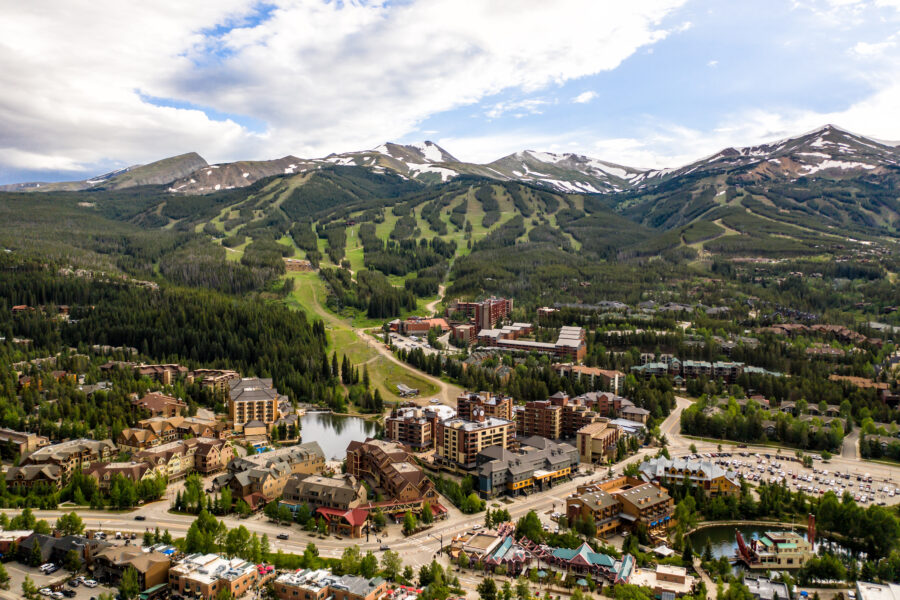
For skiers of all levels, choosing between Breckenridge and Arapahoe Basin involves many considerations. From terrain differences to ticket prices, these two Colorado resorts offer distinct experiences that cater to different preferences.
What are the best slopes for beginners at Breckenridge and Arapahoe Basin?
Breckenridge offers significantly more beginner options, with numerous green runs spread across multiple peaks. Peaks 8 and 9 are particularly welcoming for novice skiers, with wide, gentle slopes and dedicated learning areas.
Arapahoe Basin, often called A-Basin by locals, has limited terrain for beginners. The Molly Hogan learning area provides a small but suitable space for first-timers, but the resort generally caters more to intermediate and advanced skiers.
How do lift ticket prices compare between Breckenridge and Arapahoe Basin?
A-Basin typically offers more affordable daily lift tickets than Breckenridge, making it the better value option for budget-conscious skiers. Many consider A-Basin to provide “the most for the dollar” among Colorado resorts.
Breckenridge’s tickets tend to be pricier, reflecting its status as a premier destination resort with extensive amenities. Both resorts are available on various season pass options, with Breckenridge featured on the Epic Pass and A-Basin sometimes available as an add-on partner.
Which resort offers a more family-friendly experience, Breckenridge or Arapahoe Basin?
Breckenridge excels at catering to families with children of different ages and abilities. The resort offers comprehensive ski school programs, childcare services, and a variety of non-skiing activities in its charming town.
A-Basin’s more laid-back, no-frills approach appeals to certain families, especially those with older or more experienced kids. Its smaller size means less walking and easier meet-ups but has fewer amenities specifically designed for younger children.
Can you explain the differences in terrain between Breckenridge and Arapahoe Basin?
Breckenridge boasts 155 trails across five peaks, compared to A-Basin’s 105 runs. Breck offers greater variety and even distribution across difficulty levels, including extensive intermediate terrain.
A-Basin features steeper, more challenging terrain and is renowned for excellent advanced and expert runs. The Montezuma Bowl and the legendary Pallavicini face draw expert skiers looking for rugged terrain and deep powder stashes.
The elevations differ, too, with A-Basin sitting at a higher base elevation but Breckenridge reaching a higher peak elevation. This creates different snow conditions and season lengths at each resort.
What are the unique après-ski activities available at Breckenridge and Arapahoe Basin?
Breckenridge offers a vibrant downtown with numerous restaurants, bars, shops, and cultural attractions. The historic mining town provides extensive nightlife options, spas, and non-skiing activities like snowshoeing and sleigh rides.
A-Basin is famous for its parking lot tailgating culture, particularly at “The Beach,” where skiers gather for laid-back cookouts and socializing. The 6th Alley Bar & Grill at A-Basin’s base provides a casual atmosphere for post-skiing drinks and food.
How does the annual snowfall at Breckenridge compare to that of Arapahoe Basin?
Both resorts receive abundant snowfall, averaging over 300 inches annually. However, A-Basin often benefits from its higher elevation and positioning along the Continental Divide, which can result in slightly more powder days.
Breckenridge has extensive snowmaking capabilities that complement natural snowfall, ensuring consistent coverage across its widespread terrain. Meanwhile, A-Basin typically maintains a longer season due to its elevation and north-facing slopes, often staying open into June or July.

